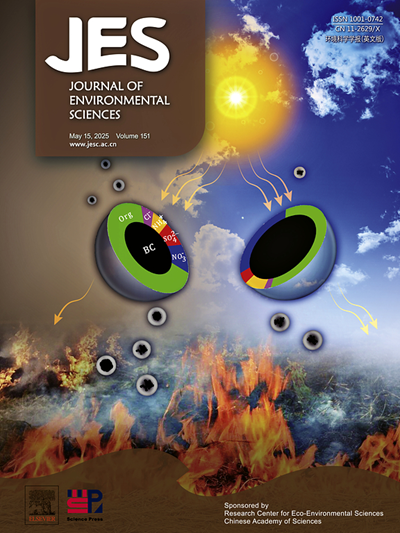Combined impacts of chlorine and pharmaceutical discharge on river periphyton and zoobenthos
IF 5.9
2区 环境科学与生态学
Q1 ENVIRONMENTAL SCIENCES
引用次数: 0
Abstract
Following the COVID-19 outbreak, a vast array of chlorine disinfectants was used to eliminate the virus, leading to inevitable discharge into aquatic ecosystems. These environments also contain various anthropogenic micropollutants, such as pharmaceuticals, which pose threats to the survival and activities of biological communities. Consequently, the presence of discharged chlorine disinfectants and pharmaceuticals can simultaneously impact the structure and function of aquatic ecosystems. To investigate the combined effects of chlorine disinfectants and pharmaceuticals on the periphyton and zoobenthos (Limnodrilus hoffmeisteri) community composition and function, we conducted a 12-flume reactor experiment using sodium hypochlorite and representative pharmaceuticals (abundant in the Yangtze River) as influents. Results demonstrated that the discharge of chlorine disinfectants further altered the composition of river prokaryotic communities. Eukaryotic organisms within the periphyton exhibited greater resilience to chlorine exposure compared to prokaryotic communities. Metagenomic analysis revealed that prokaryotic communities with different compositions can execute similar functions, while RNA sequencing indicated that co-exposure promoted biological processes such as focal adhesion and ribosome synthesis, but inhibited activities related to nitrogen metabolism and resistance to folate antimicrobials. Additionally, co-exposure induced oxidative stress in L. hoffmeisteri, leading to stronger environmental adaptation.

氯和药物排放对河流周边植物和底栖动物的综合影响
在2019冠状病毒病爆发后,人们使用了大量含氯消毒剂来消除病毒,导致病毒不可避免地排放到水生生态系统中。这些环境还含有各种人为微污染物,如药品,对生物群落的生存和活动构成威胁。因此,排放的氯消毒剂和药物的存在可以同时影响水生生态系统的结构和功能。为了研究含氯消毒剂和药物对周围植物和底栖动物(Limnodrilus hoffmeisteri)群落组成和功能的联合影响,我们以次氯酸钠和代表性药物(长江中丰富)为进水源,进行了12水槽的反应器实验。结果表明,含氯消毒剂的排放进一步改变了河流原核生物群落的组成。与原核生物群落相比,藻周内的真核生物对氯暴露表现出更大的恢复能力。宏基因组分析显示,不同组成的原核生物群落可以执行相似的功能,而RNA测序表明,共暴露促进了生物过程,如局点粘附和核糖体合成,但抑制了氮代谢和对叶酸抗菌剂的抗性。此外,共暴露诱导了霍氏乳杆菌的氧化应激,导致更强的环境适应性。
本文章由计算机程序翻译,如有差异,请以英文原文为准。
求助全文
约1分钟内获得全文
求助全文
来源期刊

Journal of Environmental Sciences-china
环境科学-环境科学
CiteScore
13.70
自引率
0.00%
发文量
6354
审稿时长
2.6 months
期刊介绍:
The Journal of Environmental Sciences is an international journal started in 1989. The journal is devoted to publish original, peer-reviewed research papers on main aspects of environmental sciences, such as environmental chemistry, environmental biology, ecology, geosciences and environmental physics. Appropriate subjects include basic and applied research on atmospheric, terrestrial and aquatic environments, pollution control and abatement technology, conservation of natural resources, environmental health and toxicology. Announcements of international environmental science meetings and other recent information are also included.
 求助内容:
求助内容: 应助结果提醒方式:
应助结果提醒方式:


